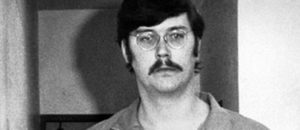Dennis Rader – Wichita, Kansas
Dennis Lynn Rader, born in 1945, is an American convicted serial killer responsible for the deaths of ten people in and around Wichita, Kansas, primarily between the mid-1970s and early 1990s. He became notorious for sending communications to police and the media that taunted investigators and described aspects of his crimes.
Key Facts
- He murdered ten people in Sedgwick County, Kansas.
- He became known as the BTK killer, with “BTK” standing for “Bind, Torture, Kill”.
- Rader was arrested in 2005 after renewed communications with authorities that began in 2004.
- He pleaded guilty and received ten consecutive life sentences without parole.
- He is alive and serving his sentences at El Dorado Correctional Facility in Kansas.
- His crimes involved binding and strangulation, and he took personal items from several scenes.
- The known murders occurred between 1974 and 1991, followed by a long period of silence and renewed contact in the 2000s.
- All confirmed offenses took place in and around Wichita, in Sedgwick County.
- Throughout the crime spree he sent letters and other communications to police and local news outlets.
- Rader stalked multiple potential victims, including one woman who escaped by returning home later than he expected, and several women later sought restraining orders against him.
Crimes and Victims
Rader’s confirmed victims numbered ten, and his attacks were concentrated in residential settings in Sedgwick County. He used binding and strangulation as his primary methods and often left with personal items taken from the scenes.
He also engaged in prolonged stalking of some targets and planned additional attacks that were not carried out. One intended victim in 1979 escaped after failing to return home at the time he expected, and several women later filed restraining orders related to his behavior.
Capture and Trial
After a hiatus in the 1990s and early 2000s, Rader resumed sending material to police and media in 2004, which ultimately led investigators to him. Forensic examination of those communications and related evidence provided links that resulted in his arrest in early 2005.
Rader admitted to the murders during interrogation and entered guilty pleas in state court, avoiding a lengthy jury trial. Sentencing produced ten consecutive life terms, and he has remained incarcerated since the conclusion of the legal proceedings.
Psychology and Motives
Rader’s correspondence and behavior at crime scenes suggested a desire for control and attention; he repeatedly sought to communicate with authorities and the press. He collected items from some scenes and provided detailed accounts in letters, actions investigators and commentators have interpreted as efforts to relive and claim credit for his crimes.
Assessments by investigators and mental health professionals pointed to patterns of stalking, obsessive preparation, and sexualized violence, though formal clinical diagnoses are part of confidential evaluations. His statements during confession illuminated both calculated planning and long-standing fantasies that influenced his victim selection and methods.
Background / Early Life
Born in 1945, Rader spent most of his life in Kansas and maintained a family and community presence that included participation in local organizations. Those outward roles, including involvement in church activities, contrasted with the private criminal behavior investigators later uncovered.
Details of his early life and employment show a person who presented as an ordinary family man to neighbors and colleagues. That duality played a significant role in how the crimes remained undetected for years and surprised many who had known him socially.
Legacy and Media Coverage
The BTK case attracted extensive local and national media attention, prompting books, documentaries, and true-crime coverage that examined both the crimes and the investigative work that led to Rader’s capture. The case is frequently cited in discussions of offender profiling, victimology, and the evolution of digital and forensic techniques used by law enforcement.
Survivors, family members of victims, and community groups have continued to grapple with the long-term impact of the crimes, and the case has influenced how police agencies handle taunting communications and cold-case investigations. Public interest in the BTK story remains high, in part because of the juxtaposition between Rader’s public life and his criminal actions.
Trending on Killerpedia

Jeffrey Dahmer – Milwaukee, Wisconsin

Dennis Nilsen – Full Sutton, Yorkshire, England

Ted Bundy – Florida

Gary Ridgway – Washington State

Pedro Lopez

Edward Theodore Gein

Edmund Kemper – California

Fritz Honka – Hamburg, Germany

Fred & Rose West – Gloucester, England

Christopher Robin Worrell – Truro, South Australia, Australia

